Search the Special Collections and Archives Portal
Search Results
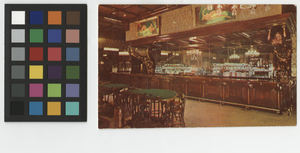
Postcard showing the interior of the Golden Nugget Gambling Hall (Las Vegas), after 1946
Date
Archival Collection
Description
Bar area of the Golden Nugget Gambling Hall. Printed text on back of postcard: "The million dollar Golden Nugget Gambling Hall, Saloon and Restaurant, Las Vegas, Nevada, 'where fortune smiles,' See the old-style West in our modern world. A place of mahogany bars, crystal chandeliers, with the genuine hospitality and old-time gaity of the Barbary Coast and the Virginia City of fifty years ago. 'Plastichrome' by Colourpicture, Boston 15, Mass., U.S.A"
Site Name: Golden Nugget Las Vegas
Address: 129 East Fremont Street
Image
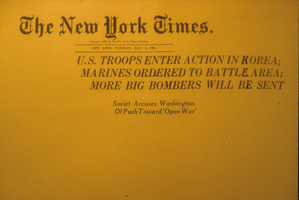
New York Times articles: photographic slide
Date
Archival Collection
Description
From the Sister Klaryta Antoszewska Photograph Collection (PH-00352). From Slides #1550 through 1557. Newspaper title text: “U.S. Troops Enter Action in Korea; Marines Ordered to Battle Area; More Big Bombers Will Be Sent”.
Image

Photographs of Ron Lurie at work as a City Council Member, 1973-1985
Date
Archival Collection
Description
Photographs of Ron Lurie in his City Hall office.
Image
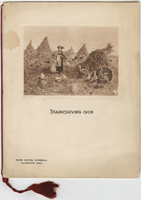
Thanksgiving 1908, menu, New Hotel Kimball
Date
Archival Collection
Description
Text
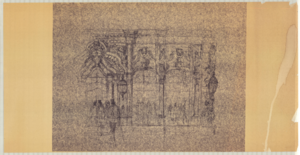
Untitled sketch: figures entering music hall
Date
Archival Collection
Description
Series II. Folies-Bergere production papers, designs, and photographs -- 15th Edition -- Set design drawings by William Morris
Image

An exterior view of the Silver Slipper Gambling Hall: photographic film
Date
Archival Collection
Description
Image
Partial Test Ban Treaty Amendment Conference, New York, New York
Level of Description
Archival Collection
Collection Name: Nevada Desert Experience Records
Box/Folder: N/A
Archival Component
New dumbwaiters, 1982 January 25
Level of Description
Archival Collection
Collection Name: Martin Stern Architectural Records
Box/Folder: Roll 633
Archival Component
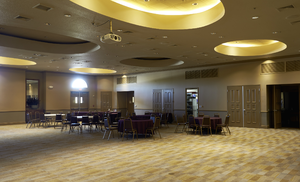
Photograph of Midbar Kodesh Social Hall, Henderson (Nev.), November 10, 2016
Date
Archival Collection
Description
Housed in the first building constructed at Midbar Kodesh Temple, the Social Hall provides space for gatherings. The Social hall was dedicated to the Feldman Family.
Image
Marion Allen remembers Anderson Mess Hall: interview video clip
Date
Description
Marion Allen remembers Anderson Mess Hall
Moving Image
